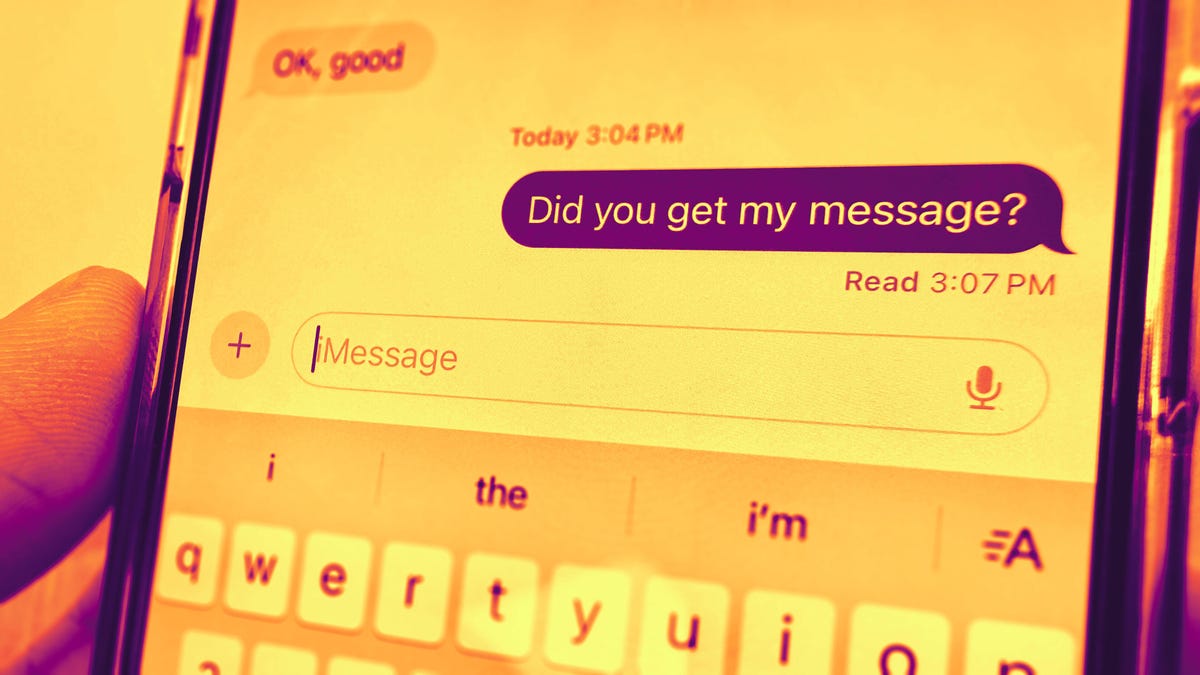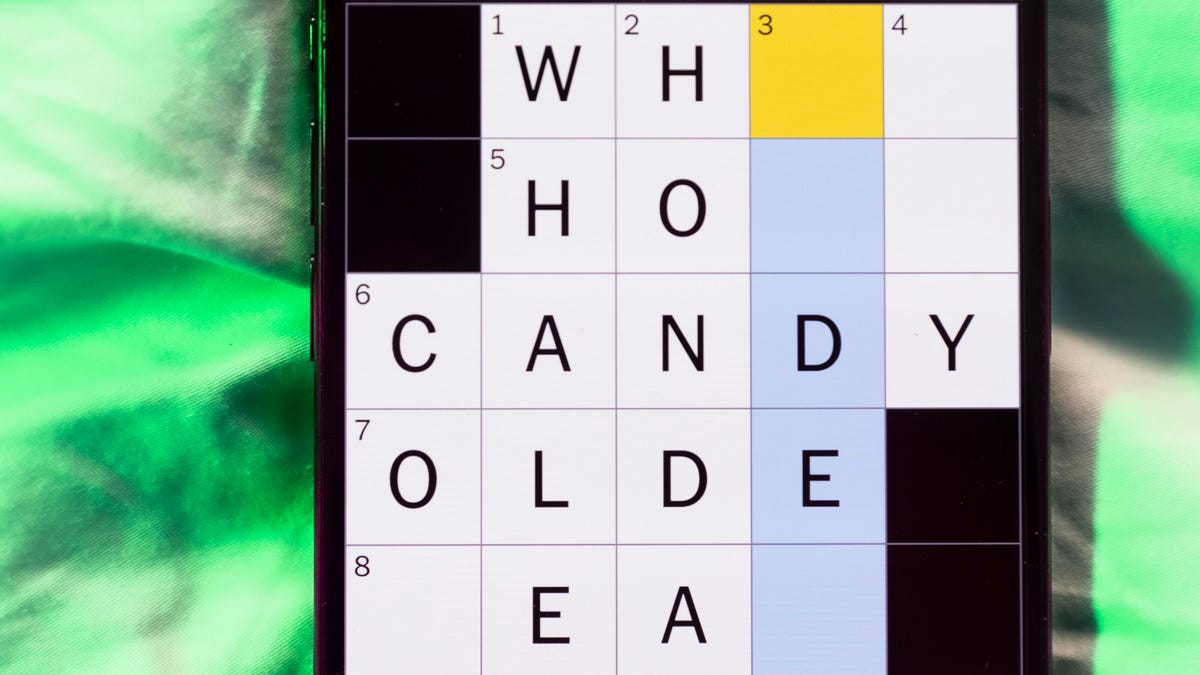Technologies
Stop Taking So Long to Reply to Texts. You’re Sabotaging Your Friendships
Commentary: You might think it’s no big deal to regularly leave your friends on Read. But it can irreparably strain your relationships.

Depending on who you ask, texting is either an easy way to keep in touch or an overbearing item on an ever-growing to-do list. What’s convenient for one person may be a burden to another, which can cause strains on some relationships.
So, how long can someone go without texting you back before they end up on the friendship chopping block? Not very long, if you ask me.
It might come across as harsh, but I believe healthy relationships are sustained by timely communication, instead of consistently leaving someone on Read or Delivered for a week. It becomes practically impossible to coordinate hangouts or share life updates if someone can’t bother to respond to your messages within a reasonable window, or otherwise call you if that’s how they prefer to chat.
Friends who take days to reply — if they ever do — come off as indifferent and uninterested, especially when they don’t arrange alternative ways to catch up. You might start to wonder how much they actually value your time and effort, and why they don’t prioritize communicating with you. Repeated offenses can make it tempting to throw in the towel and invest your energy elsewhere.
How long can you go without texting someone back?
I’ll first acknowledge my personal bias here: I have always enjoyed texting. It’s been my preferred method of communication since I got my first phone at 13 years old and discovered the magic of talking to my friends anytime, anywhere.
It’s no coincidence that some of my closest friends tend to be people with whom I regularly text. There’s a sense of familiarity that comes from sharing your day-to-day experiences and thoughts. It’s also a fun way to engage in banter and share relatable memes and videos.
And before I upset anyone — if I haven’t already — I’ll again acknowledge that for some people, texting isn’t enjoyable. But I still think people have a responsibility to communicate clearly and frequently with loved ones if they hope to maintain those relationships, whether it’s a text, phone call or in-person meetup.
So, what’s an acceptable window of time for someone to text you back?
Despite how unaccommodating I may come off in that frank introduction, I do like to give people chances. If someone takes days to reply to me the first time, or simply never gets back to me, I let it go. But if it happens again, that’s a strike. I believe you should always text someone back within a 24-hour period — notwithstanding special circumstances like travel or illness, etc.
Repeatedly taking several days to reply is not only inconsiderate, it also just kills the vibe. Why do I care if you laughed at a meme I sent you five days ago? At that point, I won’t even remember what I reached out to you about. And if I’m asking you about going to an event and you only respond after it’s over, that unlocks a whole other level of annoyance.
I believe the time and effort you invest in friendships includes replying to texts within a reasonable period (as long as your friend isn’t bombarding your inbox, of course). So if someone continuously takes days to reply, I take it as my sign to stop trying, and to put that energy into the friends who won’t leave me waiting.
A more personal way to stay in touch
As a teenager, my friends and I would text each other around the clock, sending a steady stream of messages and photos about anything and everything, most of it totally inconsequential. (Being young and unemployed made this all the easier.)
But as we got older and busier, and as social media began eating up our free time, text messages were largely supplanted by posting and consuming content on platforms like Facebook and Instagram. Our digital activity became less personal, more performative and less conducive to maintaining relationships. Social media gives the false impression of keeping up with someone without actually talking to them, so relationships tend to fracture.
Most people have witnessed the awkwardness of someone not replying to your text for days, but ceaselessly posting on social media. Time and energy goes into both activities, and choosing to bypass personal interactions for more public-facing ones can prevent you from feeling a genuine connection to the people who care to reach out to you. Taking 30 seconds to reply to a text could be the difference between making and breaking a meaningful relationship.
While phone calls and in-person meetups are undoubtedly the best ways to have an in-depth conversation with someone, finding a time that works for both parties can be a challenge, given how increasingly hectic our lives have become. Texting can be a comparatively low-lift way to build a true sense of camaraderie and connection.
So, the next time you think it’s not a big deal to leave someone on Read or Delivered, maybe reconsider what your actions (or lack thereof) may convey.
Technologies
Today’s NYT Connections Hints, Answers and Help for Dec. 24, #927
Here are some hints and the answers for the NYT Connections puzzle for Dec. 24 #927

Looking for the most recent Connections answers? Click here for today’s Connections hints, as well as our daily answers and hints for The New York Times Mini Crossword, Wordle, Connections: Sports Edition and Strands puzzles.
Today’s NYT Connections puzzle is kind of tough. Ooh, that purple category! Once again, you’ll need to look inside words for hidden words. Read on for clues and today’s Connections answers.
The Times has a Connections Bot, like the one for Wordle. Go there after you play to receive a numeric score and to have the program analyze your answers. Players who are registered with the Times Games section can now nerd out by following their progress, including the number of puzzles completed, win rate, number of times they nabbed a perfect score and their win streak.
Read more: Hints, Tips and Strategies to Help You Win at NYT Connections Every Time
Hints for today’s Connections groups
Here are four hints for the groupings in today’s Connections puzzle, ranked from the easiest yellow group to the tough (and sometimes bizarre) purple group.
Yellow group hint: Cash out.
Green group hint: Chomp
Blue group hint: Walleye and salmon.
Purple group hint: Make a musical sound, with a twist.
Answers for today’s Connections groups
Yellow group: Slang for money.
Green group: Masticate.
Blue group: Fish.
Purple group: Ways to vocalize musically plus a letter.
Read more: Wordle Cheat Sheet: Here Are the Most Popular Letters Used in English Words
What are today’s Connections answers?
The yellow words in today’s Connections
The theme is slang for money. The four answers are bacon, bread, cheese and paper.
The green words in today’s Connections
The theme is masticate. The four answers are bite, champ, chew and munch.
The blue words in today’s Connections
The theme is fish. The four answers are char, pollock, sole and tang.
The purple words in today’s Connections
The theme is ways to vocalize musically plus a letter. The four answers are hump (hum), rapt (rap), singe (sing) and whistler (whistle).
Don’t miss any of our unbiased tech content and lab-based reviews. Add CNET as a preferred Google source.
Toughest Connections puzzles
We’ve made a note of some of the toughest Connections puzzles so far. Maybe they’ll help you see patterns in future puzzles.
#5: Included «things you can set,» such as mood, record, table and volleyball.
#4: Included «one in a dozen,» such as egg, juror, month and rose.
#3: Included «streets on screen,» such as Elm, Fear, Jump and Sesame.
#2: Included «power ___» such as nap, plant, Ranger and trip.
#1: Included «things that can run,» such as candidate, faucet, mascara and nose.
Technologies
Today’s NYT Mini Crossword Answers for Wednesday, Dec. 24
Here are the answers for The New York Times Mini Crossword for Dec. 24.

Looking for the most recent Mini Crossword answer? Click here for today’s Mini Crossword hints, as well as our daily answers and hints for The New York Times Wordle, Strands, Connections and Connections: Sports Edition puzzles.
Need some help with today’s Mini Crossword? I’m Irish-American, but yet 6-Down, which involves Ireland, stumped me at first. Read on for all the answers.. And if you could use some hints and guidance for daily solving, check out our Mini Crossword tips.
If you’re looking for today’s Wordle, Connections, Connections: Sports Edition and Strands answers, you can visit CNET’s NYT puzzle hints page.
Read more: Tips and Tricks for Solving The New York Times Mini Crossword
Let’s get to those Mini Crossword clues and answers.
Mini across clues and answers
1A clue: Wordle or Boggle
Answer: GAME
5A clue: Big Newton
Answer: ISAAC
7A clue: Specialized vocabulary
Answer: LINGO
8A clue: «See you in a bit!»
Answer: LATER
9A clue: Tone of many internet comments
Answer: SNARK
Mini down clues and answers
1D clue: Sharks use them to breathe
Answer: GILLS
2D clue: From Singapore or South Korea, say
Answer: ASIAN
3D clue: Large ocean ray
Answer: MANTA
4D clue: ___ beaver
Answer: EAGER
6D clue: Second-largest city in the Republic of Ireland, after Dublin
Answer: CORK
Don’t miss any of our unbiased tech content and lab-based reviews. Add CNET as a preferred Google source.
Technologies
Quadrantids Is a Short but Sweet Meteor Shower Just After New Year’s. How to See It
This meteor shower has one of the most active peaks, but it doesn’t last for very long.

The Quadrantids has the potential to be one of the most active meteor showers of the year, and skygazers won’t have long to wait to see it. The annual shower is predicted to reach maximum intensity on Jan. 3. And with a display that can rival Perseids, Quadrantids could be worth braving the cold to see it.
Don’t miss any of our unbiased tech content and lab-based reviews. Add CNET as a preferred Google source.
The show officially begins on Dec. 28 and lasts until Jan. 12, according to the American Meteor Society. Quadrantids is scheduled to peak on Jan. 2-3, when it may produce upwards of 125 meteors per hour. This matches Perseids and other larger meteor showers on a per-hour rate, but Quadrantids also has one of the shortest peaks at just 6 hours, so it rarely produces as many meteors overall as the other big ones.
The meteor shower comes to Earth courtesy of the 2003 EH1 asteroid, which is notable because most meteor showers are fed from comets, not asteroids. Per NASA, 2003 EH1 is a near-Earth asteroid that orbits the sun once every five and a half years. Science posits that 2003 EH1 was a comet in a past life, but too many trips around the sun stripped it of its ice, leaving only its rocky core. The Earth runs through EH1’s orbital debris every January, which results in the Quadrantids meteor shower.
How and where to see Quadrantids
Quadrantids is named for the constellation where its meteors appear to originate, a point known as the radiant. This presents another oddity, as the shower originates from the constellation Quadrans Muralis. This constellation ceased to be recognized as an official constellation in the 1920s and isn’t available on most publicly accessible sky maps.
For the modern skygazer, you’ll instead need to find the Bootes and Draco constellations, both of which contain stars that were once a part of the Quadrans Muralis. Draco will be easier to find after sunset on the evening of Jan. 2, and will be just above the horizon in the northern sky. Bootes orbits around Draco, but will remain under the horizon until just after 1 a.m. local time in the northeastern sky. From that point forward, both will sit in the northeastern part of the sky until sunrise. You’ll want to point your chair in that direction and stay there to see meteors.
As the American Meteor Society notes, Quadrantids has a short but active peak, lasting around 6 hours. The peak is expected to start around 4 p.m. ET and last well into the evening. NASA predicts the meteor shower to start one day later on Jan. 3-4, so if you don’t see any on the evening of Jan. 2, try again on Jan. 3.
To get the best results, the standard space viewing tips apply. You’ll want to get as far away from the city and suburbs as possible to reduce light pollution. Since it’ll be so cold outside, dress warmly and abstain from alcoholic beverages, as they can affect your body temperature. You won’t need any binoculars or telescopes, and the reduced field of view may actually impact your ability to see meteors.
The bad news is that either way, the Quadrantids meteor shower coincides almost perfectly with January’s Wolf Moon, which also happens to be a supermoon. This will introduce quite a lot of light pollution, which will likely drown out all but the brightest meteors. So, while it may have a peak of over 100 meteors per hour, both NASA and the AMS agree that the more realistic expectation is 10 or so bright meteors per hour.
-

 Technologies3 года ago
Technologies3 года agoTech Companies Need to Be Held Accountable for Security, Experts Say
-

 Technologies3 года ago
Technologies3 года agoBest Handheld Game Console in 2023
-

 Technologies3 года ago
Technologies3 года agoTighten Up Your VR Game With the Best Head Straps for Quest 2
-

 Technologies4 года ago
Technologies4 года agoBlack Friday 2021: The best deals on TVs, headphones, kitchenware, and more
-

 Technologies4 года ago
Technologies4 года agoVerum, Wickr and Threema: next generation secured messengers
-

 Technologies4 года ago
Technologies4 года agoGoogle to require vaccinations as Silicon Valley rethinks return-to-office policies
-

 Technologies4 года ago
Technologies4 года agoOlivia Harlan Dekker for Verum Messenger
-

 Technologies4 года ago
Technologies4 года agoiPhone 13 event: How to watch Apple’s big announcement tomorrow
